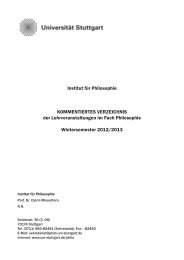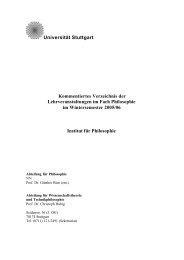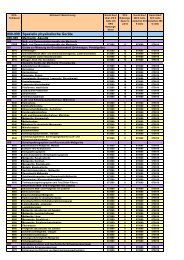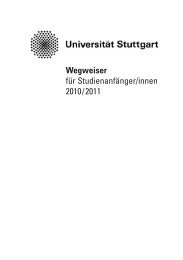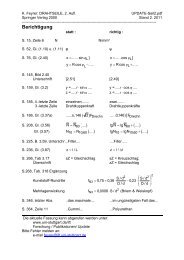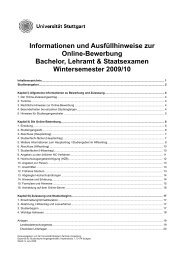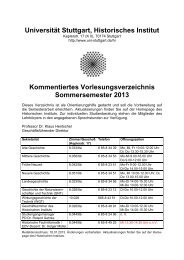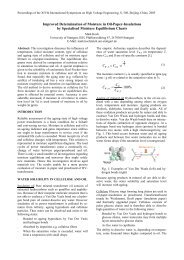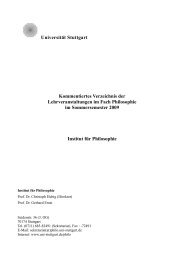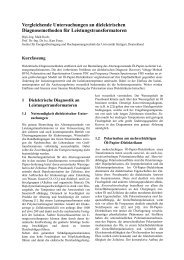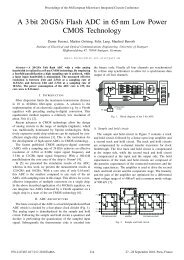Discourse Structure and the Structure of Context - Multiple Choices
Discourse Structure and the Structure of Context - Multiple Choices
Discourse Structure and the Structure of Context - Multiple Choices
Create successful ePaper yourself
Turn your PDF publications into a flip-book with our unique Google optimized e-Paper software.
2<br />
The dependence <strong>of</strong> ''meaning'' on utterance context is hard to miss,<br />
since it is so obvious that what is meant by ''indexical'' expressions like<br />
I, you or now does depend on it. 1 Indeed, it is a dependence <strong>of</strong> which<br />
<strong>the</strong>orists have been aware for a very long time. I am not sure how far<br />
this awareness can be traced back. But it clearly goes back to times well<br />
before <strong>the</strong> beginning, rouhly forty years ago, <strong>of</strong> formal natural<br />
language semantics as we know <strong>and</strong> practise it today. For instance,<br />
explicit analyses <strong>of</strong> <strong>the</strong> role <strong>of</strong> utterance context can be found in<br />
[Russell, ??] <strong>and</strong> in [Reichenbach, El. <strong>of</strong> Symb Log.] Utterance context<br />
played a central role in <strong>the</strong> logical <strong>and</strong> semantical studies <strong>of</strong> <strong>the</strong> sixties<br />
<strong>and</strong> seventies that is sometimes referred to as <strong>the</strong> ''California School'',<br />
exemplified by <strong>the</strong> seminal work <strong>of</strong> Montague, Scott, Kaplan <strong>and</strong> Lewis<br />
Today this role <strong>of</strong> utterance context is perhaps best-known through <strong>the</strong><br />
three-level <strong>the</strong>ory <strong>of</strong> meaning <strong>of</strong> Kaplan's 'Demonstratives'. Kaplan's<br />
<strong>the</strong>ory has also been characterised as ''two-dimensional'': one<br />
dimension <strong>of</strong> semantic dependence is dependence on utterance context,<br />
<strong>the</strong> o<strong>the</strong>r is <strong>the</strong> dependence on ''circumstances <strong>of</strong> evaluation. This twodimensionality<br />
is also <strong>the</strong> hall-mark <strong>of</strong> <strong>the</strong> closely related account <strong>of</strong><br />
assertion, presupposition <strong>and</strong> <strong>the</strong> communication <strong>of</strong> information that<br />
was proposed in <strong>the</strong> early seventies by Stalnaker. [ref. Assertion,<br />
Pragmatics,..]<br />
The second context notion which admits <strong>of</strong> precise definitions is that <strong>of</strong><br />
<strong>the</strong> discourse context, as it is used in <strong>the</strong>oreis <strong>of</strong> Dynamic Semantics.<br />
The concern common to all <strong>the</strong>se <strong>the</strong>ories is to account for <strong>the</strong><br />
1 Note that I am using ``meaning'' in a non-technical sense. It is common for<br />
accounts <strong>of</strong> <strong>the</strong> semantics <strong>of</strong> a word like I to claim that <strong>the</strong> word has a fixed meaning,<br />
but that its refrerence depends on utterance context, <strong>and</strong> that <strong>the</strong> referent <strong>of</strong> a given<br />
occurrence <strong>of</strong> I is obtained by 'applying' this fixed meaning to <strong>the</strong> context <strong>of</strong> that<br />
occurrence. (So, if utterance contexts are tuples made up <strong>of</strong> speaker, utterance time<br />
<strong>and</strong>, as <strong>the</strong> case may be, addressee, <strong>the</strong>n <strong>the</strong> meaning <strong>of</strong> I will simply be <strong>the</strong> projection<br />
function which selects <strong>the</strong> first component <strong>of</strong> each such tuple.) The pre<strong>the</strong>oretical<br />
use <strong>of</strong> ''meaning'' to which I have helped myself here is not to be confounded with<br />
<strong>the</strong>se more conscious uses. ''Semantic value'' would arguably have done better for my<br />
purpose, except that this really has <strong>the</strong> ring <strong>of</strong> a term <strong>of</strong> art.<br />
I am making a similarly unreflected use <strong>of</strong> <strong>the</strong> term 'interpretation'. The main<br />
difference with 'meaning' is that 'interpretation' is used to refer to <strong>the</strong> process <strong>of</strong><br />
determining <strong>the</strong> meaning <strong>of</strong> a bit <strong>of</strong> language, as well as to <strong>the</strong> results <strong>of</strong> such<br />
processes. These results will, according to one <strong>of</strong> <strong>the</strong> basic assumptions on which <strong>the</strong><br />
approach <strong>of</strong> this paper rests, always be representations which capture <strong>the</strong> meanings<br />
that interpretation processes aim to identify.<br />
Given <strong>the</strong> formal framework which <strong>the</strong> later parts <strong>of</strong> <strong>the</strong> paper presuppose <strong>the</strong>se loose<br />
uses <strong>of</strong> terms that have been given well-defined, specific definitions in th literature<br />
are <strong>of</strong> no consequence.



